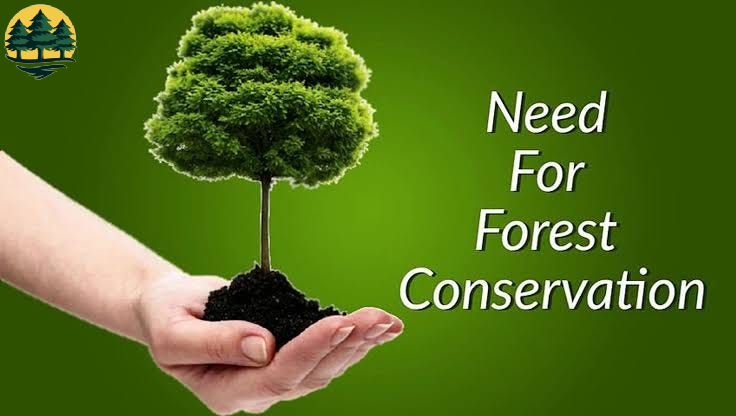Forest conservation stands as a pivotal endeavor in safeguarding our planet’s future. The intricate web of life within forests, from towering trees to diverse flora and fauna, underscores their indispensable role in maintaining ecological balance.

Carbon Sequestration and Climate Mitigation
As carbon sinks, forests absorb CO2 from the atmosphere, helping mitigate the impacts of climate change.
Oxygen Production and Weather Regulation
Forests produce oxygen essential for human survival and regulate local and global weather patterns.
Ecosystem Services: Water Filtration and Soil Stabilization
Forests provide crucial ecosystem services such as water filtration and soil stabilization, benefiting both biodiversity and human societies.
Threats to Forests: Deforestation and Climate Change
Forests face significant threats including deforestation driven by agriculture, logging, and the compounding effects of climate change.
Strategies for Protection
Protecting forests involves establishing protected areas, promoting sustainable forestry practices, and empowering local communities. Technological innovations such as satellite monitoring aid in tracking deforestation and biodiversity loss in real-time. International agreements like the Paris Agreement underscore the global urgency and commitment to forest conservation efforts.
The Crucial Role of Forests
Forests are indispensable for maintaining the balance of our ecosystems. They act as carbon sinks, absorbing carbon dioxide from the atmosphere and helping to mitigate the impacts of climate change. Through photosynthesis, forests produce oxygen, making them essential for the very air we breathe. Moreover, forests support a staggering array of biodiversity, from the smallest insects to the largest mammals, providing habitat, food, and protection for countless species.
Facing Threats
Despite their critical importance, forests worldwide are under relentless pressure. Deforestation, driven by agricultural expansion, logging, infrastructure development, and illegal activities, continues to ravage these vital ecosystems. Each year, millions of hectares of forest are lost, leading to irreversible habitat destruction, loss of biodiversity, and contributing significantly to global greenhouse gas emissions. Climate change further exacerbates these threats, affecting forest health and resilience.
Benefits of Forest Conservation
Conserving forests yields numerous benefits that extend far beyond their immediate surroundings. Forests contribute to climate stability by sequestering carbon and regulating local and global weather patterns. They provide essential ecosystem services such as water filtration, soil stabilization, and flood control, benefiting both humans and wildlife alike. Forests also support sustainable livelihoods for millions of people who rely on them for food, medicine, and cultural practices.
Global Efforts and Initiatives
Around the world, efforts are underway to protect and restore forests. Governments, conservation organizations, and local communities are collaborating to establish protected areas, implement sustainable forestry practices, and enforce laws against illegal logging and deforestation. International agreements like the Paris Agreement and the United Nations Sustainable Development Goals (SDGs) emphasize the importance of forests in achieving global environmental targets and promoting sustainable development.
Empowering Communities
Central to successful forest conservation efforts is the empowerment of local communities and indigenous peoples. These groups often have profound connections to forests, possessing traditional knowledge and sustainable practices that have sustained ecosystems for generations. Engaging and supporting these communities not only strengthens conservation efforts but also enhances social equity and promotes resilient, community-driven solutions.
Technological Innovations
Advancements in technology have revolutionized forest conservation and management. Remote sensing technologies, including satellite imagery and drones, enable real-time monitoring of forest cover, biodiversity, and illegal activities such as deforestation and poaching. Geographic Information Systems (GIS) provide valuable data for decision-making, allowing stakeholders to assess the health of forests and plan conservation strategies effectively.
Looking Ahead
As we look to the future, the conservation of forests must remain a top priority. Urgent action is needed to halt deforestation, restore degraded lands, and promote sustainable land use practices. Investing in forest conservation not only protects biodiversity and mitigates climate change but also secures essential ecosystem services that are vital for human well-being.
Conclusion
Preserving forests is crucial for our future, ensuring a sustainable planet for generations to come.
Collective Responsibility
By taking collective action and prioritizing environmental stewardship, we can safeguard biodiversity and promote global prosperity.
